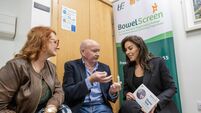Child’s play: IQ test for babies
The examination, developed by a psychologist and a toy company, checks a youngster’s intellectual development and was put together in response to overwhelming demand from adults.
It claims to calculate a child’s capacity for academic excellence by how they perform “pat-a-cake” games, handle food and interact with teddy bears.
The test follows research conducted by the Social Issues Research Centre (Sirc), which discovered that though 90% of parents are confident they know when children pass physical milestones, such as crawling and walking, they are unsure about the rate of intellectual developmental.
Most adults were not aware when their children should be able to read or when they should recognise and name shapes or colours.
Dr Peter Marsh, of Sirc, said: “While parents don’t like to feel unnecessary pressure in an environment that is already pressured, the research indicates that 75% of parents would like some sort of reassurance that their child is reaching developmental milestones at the expected time.”
His research found 91% of parents claimed to play with their children specifically to encourage them to learn.
Three-quarters of adults said their child took most interest in handling household items such as phones, kitchen equipment, doors and DVDs.
Dr Dorothy Einon, a lecturer in psychology at University College London, developed the test with toy firm Fisher-Price.
She said: “Not all children develop at the same rate.
“When we say the average six-month-old can do something, we mean that half the babies of this age will find it too difficult.
“Children who are late crawling and walking may have rather low scores, but catch up fast once they start to get about.”
a. turn his/her head away when he doesn’t want food? b. lift his/her arms to be picked up? c. play pat-a-cake or wave goodbye?
a. grab a toy you hand him? b. drop a toy on purpose? c. stack two cups or two bricks?
a. find opening the door/flap too difficult? b. use his/her hand or finger to push the door/flap open? c. is able to both open and close a door/flap with ease?
a. need you to feed him/her? b. use his/her whole hand to try to pick up small food items like peas? c. use his/her finger and thumb to pick up small food items like peas?
a. enjoy songs like 'This little piggy' or b. move his hand and/or foot in readiness for 'This little piggy'? c. do the action for one song like 'Pat-a-cake'?
a. ignore his/her toy teddy he drops? b. look for his/her toy teddy he drops? c. intentionally drops teddy and watches where it goes?
a. have a babble conversation with you? b. look where you look? c. imitate an action - such as pretending to drink from a toy cup?
a. treat it in the same way as all other toys? b. show an interest in what the toy phone can do? c. do what is expected - press buttons, put to ear etc?
a. look away and take no notice when you hide a toy under a cloth? b. look under the cloth to see where the toy is if part of it is peeping out? c. lift the cloth to find the hidden toy?
a. ignore his/her name being called? b. turn to you when you call his/her name? c. know his/her name and recognise Mummy and Daddy when asked "Where's Mummy/Daddy"?
To find your baby's developmental score give 1 for each a, 2 for each b, 3 for each c.
A is what the average child can do by 6-8 months; c is what the average child can do by 12-14 months.
At six months the average child may not be able to do everything on the list, but should be able to get an a for the majority of questions. Expected score: about 8-9.
At nine months the average child should get mostly a, with some b. Expected score: 13-15.
At 12 months the average child should get b and a few c scores. Expected score: 24-26.













